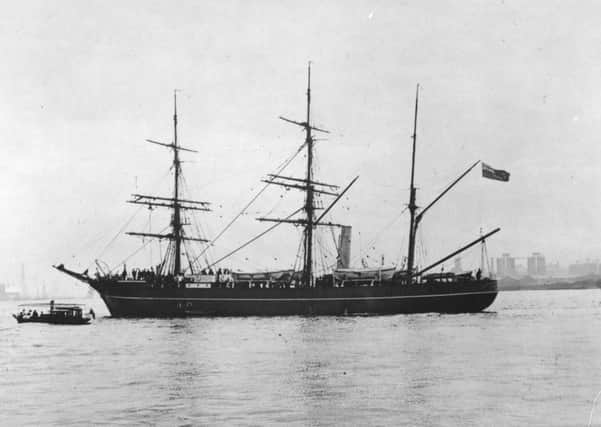Captain Scott's Discovery samples help climate change debate


Now, over a hundred years since the RSS Discovery launched in Dundee, set out in August 1901 commanded by Captain Robert Falcon Scott, scientists from the city have revealed the ship is still yielding her secrets.
An examination of biological samples returned to Britain in 1904 by Captain Scott, who returned to Britain a national hero, and his crew ,has revealed potentially crucial information for future studies into climate change.
Advertisement
Hide AdAdvertisement
Hide AdSpecimens of cyanobacteria – commonly known as blue-green algae – have been examined by a team of researchers from the University of Dundee, the Natural History Museum (NHM) in London and the Brain Chemistry Laboratory in Wyoming.
The research, to be published in the European Journal of Phycology, provides a crucial snapshot of conditions on the frozen continent before widespread human activity, said Geoffrey Codd, emeritus professor of microbiology at Dundee.
Professor Codd, who worked on the project, said, “These findings from the Discovery Expedition will provide crucial baseline information given the steady global increase in cyanobacterial populations.
• READ MORE: Scottish fact of the week: RRS Discovery
“These increases are in response to climate change and the growing human pressures on our water resources.
He added: “Using modern analytical methods, we have identified several cyanobacterial toxins in the material, the earliest evidence of these toxins in Antarctica from a period before any real human influence on the continent and before the current period of increasing evidence for climate change.”
Cyanobacteria are commonplace in water bodies throughout the world, including Scotland.
Often concentrated in clumps on the surface of lochs, reservoirs, rivers and along shorelines, blooms and mats can be toxic and are capable of killing animals or causing serious illness in humans.
Having been stored for decades, the team of researchers, led by the NHN’s Dr Anne Jungblut, began to take a closer look at clumps of the leather-like material retrieved by the Discovery Expedition, concluding that the concentration of toxins is likely to have been even higher when originally gathered.
Advertisement
Hide AdAdvertisement
Hide AdProfessor Codd added: “Modern molecular methods are allowing us to fully examine and reveal the merit of these samples.
“Having carried out research for many years on cyanobacteria and especially their toxins at the University of Dundee, the home of RRS Discovery, it is interesting to think that samples returned on that iconic ship are still proving valuable to science more than a century later.”
The Discovery was built in Dundee, a major whaling centre, where its shipyards had a long history of constructing ships resilient enough to break through pack ice in the Arctic.
The vessel was designed to spearhead the British National Antarctic Expedition.
Captain Scott and a number of his men died from starvation and exposure in March 1912 following the ill-fated Terra Nova expedition to be the be the first to reach the South Pole.